Food Storage Mistakes
6. Food Storage Conditions and Containers:
 Whether it’s preserving seeds and gardening supplies or preserving food, there’s a right way and a whole lot of wrong ways to do it. I suppose that since it’s been so long since we’ve had to LIVE based upon our understanding of long-term storage of food, it explains why there seems to be so few who understand the proper way to store these items. As such there are all sorts of rumors out there for storing food. So let me give you the absolute facts in this regard, right here; right now.
Whether it’s preserving seeds and gardening supplies or preserving food, there’s a right way and a whole lot of wrong ways to do it. I suppose that since it’s been so long since we’ve had to LIVE based upon our understanding of long-term storage of food, it explains why there seems to be so few who understand the proper way to store these items. As such there are all sorts of rumors out there for storing food. So let me give you the absolute facts in this regard, right here; right now.
There are standard enemies to a long-shelf life no matter where you live. These destructive villains are A) Temperature B) Moisture C) Oxygen D) Light E) Invaders and lastly F) Chemical exposures.
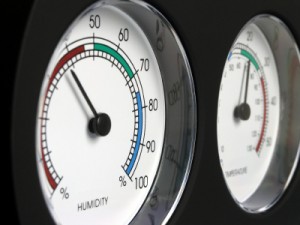 When it comes to temperatures, ALL FOODS, and future foods, benefit from cool temperatures. The benchmark I give people is 70 degrees maximum on the high side to as low as 45 degrees on the low side. (I use 68 degree or cooler in my home for all areas that contain food and food production products.) The cool temperatures allow your ingredients to sleep peacefully until you’re ready to use them.
When it comes to temperatures, ALL FOODS, and future foods, benefit from cool temperatures. The benchmark I give people is 70 degrees maximum on the high side to as low as 45 degrees on the low side. (I use 68 degree or cooler in my home for all areas that contain food and food production products.) The cool temperatures allow your ingredients to sleep peacefully until you’re ready to use them.
Moisture in the air intensifies your heat. So even if you’re in a hot climate, having a de-humidifier can make a world of difference in the temperature of a space. Humidity gets lower the closer to the ground you get. The hotter it is, the more humidity will affect your goods because hot air can hold more moisture than cool air. If the air temperature is 75 degrees Fahrenheit (24 degrees Celsius) and the (relative) humidity is zero percent, the air temperature will feel like it’s 69 degrees Fahrenheit (21 C) to our bodies. If the air temperature is 75 degrees Fahrenheit (24 C) and the (relative) humidity is 100 percent, then we will feel like it’s 80 degrees (27 C) out. So you see that even if you don’t want to pay for the air-conditioning for the whole house, you can still invest in a dehumidifier and make a big difference in protecting your food investments.
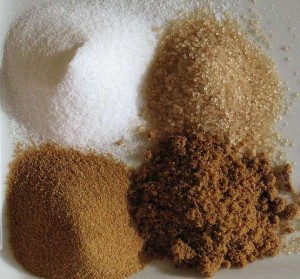 Some foods, such as sugar, get hardened when they are exposed to the slightest bit of moisture over time. White rice however absorbs moisture. So if you’re putting a large amount of sugar in a bucket, put a cup of rice in a brown paper bag (lunch size) on the top of your sugar and that will cut down on the hardening. (As a reminder, sugar has an indefinite shelf-life). You can also use this trick when storing items in Mason Jars. Just put a tablespoon of rice in a cupcake paper. Place it down in the opening of the jar, but only far enough for the top portion of the cupcake paper to fold down over the top edge of the jar. Place your flat Mason jar lid on to hold the cupcake paper in place. Then when you screw on the lid, you’re also holding the cupcake paper in place. This is done so that you don’t end up with rice mixed in with the food items you’re trying to preserve.
Some foods, such as sugar, get hardened when they are exposed to the slightest bit of moisture over time. White rice however absorbs moisture. So if you’re putting a large amount of sugar in a bucket, put a cup of rice in a brown paper bag (lunch size) on the top of your sugar and that will cut down on the hardening. (As a reminder, sugar has an indefinite shelf-life). You can also use this trick when storing items in Mason Jars. Just put a tablespoon of rice in a cupcake paper. Place it down in the opening of the jar, but only far enough for the top portion of the cupcake paper to fold down over the top edge of the jar. Place your flat Mason jar lid on to hold the cupcake paper in place. Then when you screw on the lid, you’re also holding the cupcake paper in place. This is done so that you don’t end up with rice mixed in with the food items you’re trying to preserve.
If you want to sprout or grow a food in the future, then it’s best to store the items in a sealed plastic container because it protects it AND allows it to breathe since plastic is NOT oxygen proof. However, when it comes to storing ingredients containing fats and/or oils, it’s imperative that you keep the oxygen exposure down to a minimum. Wheat isn’t a volatile food to store, however, if you purchase poor quality wheat with cracked kernels, then the vitamin E in the kernels which protects it for so long will turn rancid upon contact with the air. The same holds true with just about any nutrients our food contains. Oxygen exposure depletes nutrients. Nuts are full of great oils as is brown rice, which is why they have a reputation for going bad so quickly. So, if an item has fat or vital nutrients inside that you need to protect, you will want to store the food in oxygen-proof containers/packaging such as #10 cans, glass jars, or strong and thick “Mylar” bags.
 While you want the grains or sprouts to breathe, you don’t want the weevils inside to thrive. And no matter how hard you try, you’ll never be able to purchase grains without weevils. You may not see them, but you will if you give them plenty of opportunity to grow. This is when I use food grade diatomaceous earth. Just a tablespoon or two on the top of my ingredients in a bucket will kill the bugs. But guess what? DE is actually GOOD for you, so you don’t have to worry about you eating it.
While you want the grains or sprouts to breathe, you don’t want the weevils inside to thrive. And no matter how hard you try, you’ll never be able to purchase grains without weevils. You may not see them, but you will if you give them plenty of opportunity to grow. This is when I use food grade diatomaceous earth. Just a tablespoon or two on the top of my ingredients in a bucket will kill the bugs. But guess what? DE is actually GOOD for you, so you don’t have to worry about you eating it.
Use oxygen absorbers (or HandWarmers) for powdered food items that you also want to prevent from losing nutrients or causing oils to go rancid. (Be sure that you’re purchasing your oxygen absorbers from a reliable source as there are so many companies that sell them but they are no longer viable. )
 The better you package items, the less likely you are to get mice and other rodents bothering them. If they can’t smell it, they won’t go after it. So this is also why it’s really important to keep your food area immaculate. A couple of grains on the floor is enough to tell all of the little pests that there’s a party going on at your house. Additionally, regardless of what you can visibly see, be sure to have plenty of mousetraps on hand and set them around your food. Even if you don’t have any problems now, a flood, earthquake, and many other crisis scenarios will bring them out of the woodwork, so be prepared. We also have larger traps for rodents such as raccoons and such to use under such circumstances.
The better you package items, the less likely you are to get mice and other rodents bothering them. If they can’t smell it, they won’t go after it. So this is also why it’s really important to keep your food area immaculate. A couple of grains on the floor is enough to tell all of the little pests that there’s a party going on at your house. Additionally, regardless of what you can visibly see, be sure to have plenty of mousetraps on hand and set them around your food. Even if you don’t have any problems now, a flood, earthquake, and many other crisis scenarios will bring them out of the woodwork, so be prepared. We also have larger traps for rodents such as raccoons and such to use under such circumstances.
Above all, remember that food is the ONE investment that will not lose its value unless it loses its purpose, thus making it one of your very best investments. So treat it that way. I’ve never been able to understand people who have insurance out the wazoo for their house, cars, boats, and even pets but tell me it’s too much trouble to turn their A/C down two degrees so that they can better protect their food.
7: Food Nutrition:
It’s no secret that the nutrients in our food have slowly been stripped away bit by bit to the point that we have to work really, really hard to avoid the poisons AND to find a way to provide our bodies with the proper tools to function. If that’s the modus operandi of the now, then what can we expect if something really serious happens to bring our food supplies to a screeching halt? We’ll perish for a lack of nutrients just as easily as we can perish by giving our body whole nutrients that they aren’t used to. My heart aches as I read of the thousands of immigrants who set sail to our nation so many years ago who died as a result of the lack of Vitamin C in their diets, aka scurvy, knowing that they had what they needed to reverse those effects, they just didn’t know how. (Sprouting wheat requires no light and is a great source of Vitamin C.)
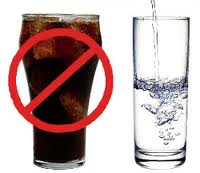 My heart doesn’t ache any less when I see people blowing their entire budget on dead foods that not only don’t provide any nutrients but actually deprive the body of key nutrients just so that they can be digested. (Soda pop, by the way, is one of the worst offenders when it comes to robbing the body of key nutrients. And yet I see people with loads and loads of it on their shelves, but NO water. *sigh*) Being committed to enjoying nutrients in our food NOW is the only way we can be assured that we’ll do the same in the future. It goes back to what I mentioned in the first 5 Food Storage Mistakes—buy what you eat, and eat what you buy. The fact of the matter is we don’t need to wait for a huge disaster to hit us before we have a food crisis. A famine wouldn’t have any different affect the majority of households today when it comes to a scarcity of nutrients because when it comes to the quality of nutrients in our food, we’re already living amidst the worst food crisis of our entire nation’s history. So, while you’re planning the meals for today and 52 weeks of tomorrow, be sure that you give way for quality nutrients to guide your Food Preparedness efforts.
My heart doesn’t ache any less when I see people blowing their entire budget on dead foods that not only don’t provide any nutrients but actually deprive the body of key nutrients just so that they can be digested. (Soda pop, by the way, is one of the worst offenders when it comes to robbing the body of key nutrients. And yet I see people with loads and loads of it on their shelves, but NO water. *sigh*) Being committed to enjoying nutrients in our food NOW is the only way we can be assured that we’ll do the same in the future. It goes back to what I mentioned in the first 5 Food Storage Mistakes—buy what you eat, and eat what you buy. The fact of the matter is we don’t need to wait for a huge disaster to hit us before we have a food crisis. A famine wouldn’t have any different affect the majority of households today when it comes to a scarcity of nutrients because when it comes to the quality of nutrients in our food, we’re already living amidst the worst food crisis of our entire nation’s history. So, while you’re planning the meals for today and 52 weeks of tomorrow, be sure that you give way for quality nutrients to guide your Food Preparedness efforts.
8: Not Enough Water:
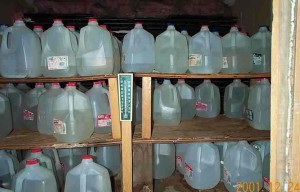 About 10 years ago I came up out of the basement after being there most of the day organizing and doing inventory. I proudly announced to my husband that we now had 500 gallons of milk. I was so excited telling him about all of the things we can do with milk including making cheese, yogurts, frostings, hearty soups, etc. Instead of being excited with me he just gave me this dumbfounded look. In frustration over his lack of enthusiasm I finally asked him why he wasn’t just as pleased as I was. His answer, “honey, I’m sorry to tell you this, but no, we don’t have 500 gallons of milk.” My first reaction was to argue with him and assure him that my inventory was perfect. I knew exactly how much we had. He then clarified his statement. “Honey, we can’t possibly have 500 gallons of milk because you’re referring to powdered milk and in order to make milk from powdered milk you need to have water, and last I checked we don’t have 500 gallons of water stored.”
About 10 years ago I came up out of the basement after being there most of the day organizing and doing inventory. I proudly announced to my husband that we now had 500 gallons of milk. I was so excited telling him about all of the things we can do with milk including making cheese, yogurts, frostings, hearty soups, etc. Instead of being excited with me he just gave me this dumbfounded look. In frustration over his lack of enthusiasm I finally asked him why he wasn’t just as pleased as I was. His answer, “honey, I’m sorry to tell you this, but no, we don’t have 500 gallons of milk.” My first reaction was to argue with him and assure him that my inventory was perfect. I knew exactly how much we had. He then clarified his statement. “Honey, we can’t possibly have 500 gallons of milk because you’re referring to powdered milk and in order to make milk from powdered milk you need to have water, and last I checked we don’t have 500 gallons of water stored.”
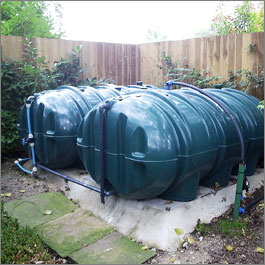 You can bet that that problem changed very quickly after I realized the truth of his statement. Unfortunately though, I find this to be a lesson that not everyone’s learned very well. We get so excited sometimes in our inventory that we fail to realize the water that’s necessary in order for our food inventory to mean anything is non-existent. I have an entire closet of freeze-dried and dehydrated foods, but the bottom line is I can’t afford to eat any of it if I don’t have enough water on hand to reconstitute it—let alone cook with it. Recently I wrote an article which demonstrated what kind of lackluster meals we could create with the recommended minimal amounts of food that you have on hand for each person for a year. The results produced a 3 inch loaf of bread and ¾ cups of beans to eat. Just to make that recipe for 3 meals a day, per person, per year, with sufficient water to wash it down with as well, I figured out that I would need 45 gallons of water per person, per year! This doesn’t take into account the drinking water that’s absolutely necessary, nor the other water needed for cooking, sanitation, and hygiene. As such, my suggestion when you’re taking an inventory of your foods, realize that if you’ve got something that requires water to make it, then be sure that that’s included in your inventory as well.
You can bet that that problem changed very quickly after I realized the truth of his statement. Unfortunately though, I find this to be a lesson that not everyone’s learned very well. We get so excited sometimes in our inventory that we fail to realize the water that’s necessary in order for our food inventory to mean anything is non-existent. I have an entire closet of freeze-dried and dehydrated foods, but the bottom line is I can’t afford to eat any of it if I don’t have enough water on hand to reconstitute it—let alone cook with it. Recently I wrote an article which demonstrated what kind of lackluster meals we could create with the recommended minimal amounts of food that you have on hand for each person for a year. The results produced a 3 inch loaf of bread and ¾ cups of beans to eat. Just to make that recipe for 3 meals a day, per person, per year, with sufficient water to wash it down with as well, I figured out that I would need 45 gallons of water per person, per year! This doesn’t take into account the drinking water that’s absolutely necessary, nor the other water needed for cooking, sanitation, and hygiene. As such, my suggestion when you’re taking an inventory of your foods, realize that if you’ve got something that requires water to make it, then be sure that that’s included in your inventory as well.
9: Appetite Fatigue:
 Have you ever had one of those days when you look inside the refrigerator to find something to make for dinner and nothing sounds good? Perhaps you can better relate to trying to find something to wear amidst a full closet and still not finding anything that makes you happy. Well, this is called appetite fatigue and it’s not some fictional buzz word, nor is it the result of a selfish state of mind. Three years ago several humanitarian organizations sent thousands of pounds of beans to the struggling nation of Ethiopia. Now, three years later nearly half of the beans are still sitting there in the shipping container. Why? It’s not because the Ethiopians are no longer starving. It’s because they simply cannot bear to eat another bean. They are literally still starving due to appetite fatigue. Even if you did get past the appetite fatigue from a physical standpoint, a person would still be affected by it emotionally.
Have you ever had one of those days when you look inside the refrigerator to find something to make for dinner and nothing sounds good? Perhaps you can better relate to trying to find something to wear amidst a full closet and still not finding anything that makes you happy. Well, this is called appetite fatigue and it’s not some fictional buzz word, nor is it the result of a selfish state of mind. Three years ago several humanitarian organizations sent thousands of pounds of beans to the struggling nation of Ethiopia. Now, three years later nearly half of the beans are still sitting there in the shipping container. Why? It’s not because the Ethiopians are no longer starving. It’s because they simply cannot bear to eat another bean. They are literally still starving due to appetite fatigue. Even if you did get past the appetite fatigue from a physical standpoint, a person would still be affected by it emotionally.
It’s amazing as I read of the accounts of those who were imprisoned in Russia and Germany during World War II, explaining how excited they were for the single day of the week in which their food rations went from the same old, same old to something different. This something different wasn’t Angel Food Cake or Four Cheese Baked Ziti. Nope, it was a seriously watered down pork broth. Yes, I said PORK. You do realize that the majority of these prisoners were orthodox Jews, right? And yet a barely there pork broth was the highlight of their week because it was different from the mush that they usually had to eat. So please, please plan on having a very diverse array of meals to eat in your year-long menu planning. The minimum amount of meals I would suggest is 14 for each mealtime ie: 14 breakfasts, 14 lunches, 14 snacks, and 14 dinners. And remember that now is a great time for you to try out various cookbook ideas–not during a crisis. When you stumble upon something that the family really, really loves, then be sure you include that into your plan.
10: Comfort Food:
Closely associated with appetite fatigue, but certainly not the same, is being aware of the value of comfort foods. I’m sure we’ve all had a day in which we were convinced that a piece of chocolate or a Dr. Pepper/Cherry Coke, or a delicious peach cobbler was going to chase the blues away. And to think that this kind of thing happens everyday for some, and regularly for others, even when life is somewhat peaceful and calm all around us. (Relatively speaking, that is.)
 Last year I had several persons take advantage of a challenge I issued in which people were to go 14 days without purchasing any other foods. In other words they were to consume only that which was already in their home for their meals, snacks, etc. No going to the car dealership for their Labor Day sale and getting free hotdogs; no latte from the local coffee shop. All food had to come from what a person already had on hand for 14 days. A lot of folks were good about taking the challenge with the rest of their family. Some were very surprised that they weren’t as “ready” as they thought they were. But there was a common theme in all of the reports I got back from those who joined in—they were surprised how valuable comfort foods became to them and were definitely awakened to the fact that they needed MORE! You’d be surprised how far cookies, brownies, homemade ice cream, scones, fruit pies, or your favorite smoothie will take you from the depths of STRESS! Even the more savory of comfort foods such as mashed potatoes, cornbread, and bacon made their way into people’s minds as something that they clearly didn’t have enough of. You’d be surprised what kind of oddball things you’ll crave after a while too. I hadn’t eaten a Twinkie since the 8th grade when I went to the Philippines for a year and a half. And yet I kept having dreams that I was back in the States and I was looking high and low for a Twinkie. Sure enough, when I finally returned home, the first thing I went to purchase was a Twinkie. (And I haven’t had one since then.) Is it a coincidence that “STRESSED” spelled backwards is “DESSERTS”? I don’t think so. *grin*
Last year I had several persons take advantage of a challenge I issued in which people were to go 14 days without purchasing any other foods. In other words they were to consume only that which was already in their home for their meals, snacks, etc. No going to the car dealership for their Labor Day sale and getting free hotdogs; no latte from the local coffee shop. All food had to come from what a person already had on hand for 14 days. A lot of folks were good about taking the challenge with the rest of their family. Some were very surprised that they weren’t as “ready” as they thought they were. But there was a common theme in all of the reports I got back from those who joined in—they were surprised how valuable comfort foods became to them and were definitely awakened to the fact that they needed MORE! You’d be surprised how far cookies, brownies, homemade ice cream, scones, fruit pies, or your favorite smoothie will take you from the depths of STRESS! Even the more savory of comfort foods such as mashed potatoes, cornbread, and bacon made their way into people’s minds as something that they clearly didn’t have enough of. You’d be surprised what kind of oddball things you’ll crave after a while too. I hadn’t eaten a Twinkie since the 8th grade when I went to the Philippines for a year and a half. And yet I kept having dreams that I was back in the States and I was looking high and low for a Twinkie. Sure enough, when I finally returned home, the first thing I went to purchase was a Twinkie. (And I haven’t had one since then.) Is it a coincidence that “STRESSED” spelled backwards is “DESSERTS”? I don’t think so. *grin*
Tune in the day after tomorrow for the next article in this series. Until then—here’s to Peace in your Preparedness.

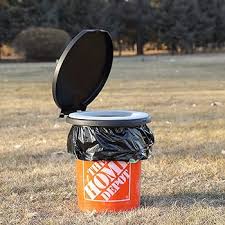
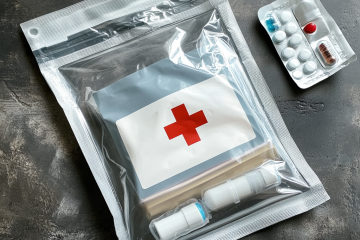
35 Comments
Melissa · May 29, 2012 at 2:03 am
You know, this is one reason I worked so long to learn how to make my own chocolate. I don’t keep chocolate in the house (or in storage) on PURPOSE because I will eat it all, but that doesn’t mean I don’t want to have it when I’m willing to actually go to the trouble of making it. (It’s not that much trouble.)
All you need is 3 shelf-stable ingredients, that you almost certainly have in storage, and a cool place to make it solidify.
mary · May 29, 2012 at 1:38 pm
I’d love to learn how to make chocolate! Tell us!
Judy · May 29, 2012 at 7:58 pm
I would like to share with you a process I just heard about and already tried. It is called oven canning..it is amazing and you can keep the food you oven can for 20 to 30 yrs. If anyone is interested please let me know. Thank you for All the good input.
Kellene Bishop · May 30, 2012 at 3:35 am
yes, we’ve explored that on this site already. It’s great for dried items but you’ll still want to use the FoodSaver method for items such as chocolate chips, marshmallows, etc–you know, the kinds of things you don’t want exposed to heat. However, I also would NOT suggest this method for nuts because even this low heat process will shorten the life of such dry products.
Peggy · July 13, 2012 at 1:25 pm
I would love to know how to can in the oven. Please inform me. God bless you.
Jamie · May 29, 2012 at 2:11 am
The water thing really hits home for me after doing my water test! While I don’t store a lot of freeze-dried food everything seemed to take some water to cook.
I did 2 months living on stored foods about 2 years ago because of a huge vet bill and My comfort foods tend to be the salty kind and I had none! After I got the bill paid I went out to get 12 pounds of popcorn and several boxes of saltine and ritz crackers. I’m working on a recipe for something similar to tater tots but made from Potato flakes. It’s not right yet but I’ll get there!
Kellene Bishop · May 29, 2012 at 3:51 am
I gave up on making tater tots, Jamie. Good luck! 🙂
Sandy Taylor · May 29, 2012 at 10:03 am
Kellene, you’ve seen Zombieland right? Ahh the endless search for a twinkie!
~ Sandy Taylor
Jackie · May 29, 2012 at 1:57 pm
Sandy, that is too funny. I thought the same thing, Zombieland! HA! 🙂
Funny how something seems so great, then you eat it, and most times, it is not what you thought it would be.
Stephanie · May 29, 2012 at 1:16 pm
My food storage is in an extra bedroom as we live in a very small country home. We also do not have air conditioning so it is what it is. Most of our stored foods are dehydrated,canned or shelf stable tho so hopefully as it is rotated frequently there won’t be too much problem with temperature. Water is a problem but I am trying to come up with ways to improve that. I am interested in how you would use handwarmers in place of the oxygen absorbers as they are cheap and easy to obtain here but I have to send for oxygen absorbers. Thanks
Tracy · May 29, 2012 at 1:36 pm
Kellene,
Based on your suggestion I have made comfort food buckets. They include -bulk candy bars
– coffee,
…and ingredients to make meals:
-Canned shrimp, crab, and dried okra to make gumbo.
-pumpkin pie and cherry pie filling
-thai tea bags, with cans of coconut milk, lemongrass, and pre-seasoned (meal) rice packets.
-the 6 kinds of tea we usually drink
I also was skeptical of powdered milk, although you’re making me doubt why, but I store canned evaporated milk, alot. We are used to it and it doesn’t HAVE to have water to use- and if we did have enough water, it would just extend it.
I also have a dozen boxes of my kids favorite granola bars.
I have a 275 gal barrel of water in my garage and 4 15-gal barrels of water in my master bedroom. I put single-serve (refilled with water) soda bottles behind all my books in all my bookshelves- 45 yards of bookshelves! (yes, not a typo!) Also, a few cases of bottled water. In dire straights, we have 2 large fish tanks (and appropriate water filters). This would only cover the people I plan for for about 6 weeks. I plan on getting 3 more 275-gal barrels as soon as I can.
Thank you for all you do!
Jackie · May 29, 2012 at 2:05 pm
I am realizing I have a major problem with where I have some of my food stores. I am going to have to work harder to produce food and learn the skills to do so in an unkind enviornment filled with heat. If I kept my house at anything cooler than 78 degrees F. My husband is not a happy man. He works in the heat here in AZ and says that it is to cold for him to adjust to. I can sort of see his point, going from 115 to 78 is 37degress in a short time. It could make anyone sick. Basicly, my food shelf life is not going to be very long term then. They don’t build houses here with a basement. So best cost effective thing for me to do, is plan for water storage, and learn to grow as much as I can. Still store things but not count on them for more than one year if that shelf life. Thank you Kellene, this really just got my focus where I need it.
This is why I read your blog.
Jackie
Suzie Queue · May 30, 2012 at 12:06 am
Yes, Jackie, there is a way, but it would be costly. I had a pole barn built in my back yard as a work shop for my husband. It was a basic package which was a 2 1/2 garage with a poured concrete floor, 2 service doors, and one garage door. It was built for a workshop – not a garage. We had to then insulate and have it wired and put wall coverings up and lights. The trick to keeping it cool in summer and tolerable in winter was LOTS of insulation. We put in fiberglas insulation in both walls and ceiling plus Celetex insulation board on the walls and the ceiling. Even in 100+degree summer heat, it stays 68 degrees F in the garage. In winter in sub-zero temperatures, it never goes below 40. I store all my root crops in there because of that. The point – build a storage shed and insulate the holy you-know-what out of it, plus, as Keleene suggests, put in a dehumidifier to boot and you should be well on your way to an above ground root cellar.
Connie Lacelle · May 29, 2012 at 2:30 pm
One thing that I’ve gradually come to the conclusion of, also, is that certain things I dehydrate should be cooked first in order to reduce the time and water I need to use to rehydrate them. I’ve been struggling with green beans, corn and peas. They seem to take forever to rehydrate so now I bring them to a boil a few hours before dinner time and then let them sit off the heat. Shortly before dinner I then cook them. I don’t see that as being viable during a disaster, so everything will be cooked before being dehydrated from now on (if they are to be cooked food anyway). The alternative is to can these (and other) things but at my altitude the canning makes them mushy. I thought I was being smart buying a weighted pressure canner instead of a dial one. If I get a chance, I think I’ll get one of those. If not, well, at least mushy canned vegetables are in water so that’s one way to store some of the needed amount.
Penny · May 29, 2012 at 8:58 pm
What’s the difference between the weighted and dial pressure cooker? I can see none and I have had both. I now have a dial one but sure wish I had a weighted one again. Anyway vegetables only need to be in a canner (the big blue pot) and not a pressure cooker. Only meat needs to be in a pressure cooker, so that is probably why they are getting mushy on you. Besides a boiling water canner is much cheaper.
Suzie Queue · May 30, 2012 at 12:27 am
That is incorrect. All vegetables except tomatoes (and fruits) must be Pressure Canned. Please check with your canning books for verification.
Penny · May 30, 2012 at 1:18 am
I have 3 canning books the one that came with the pressure cooker and Ball’s blue book and another. They all say what I just said and I looked to make sure before I wrote what I did. I am 70 years old and been canning for years and years. Yes You can use the pressure cooker if you want, but it also gives canning instructions for a canner.I just canned peaches, Pares, tomato soup, beans, corn, last year and they are still good.
Kellene Bishop · May 30, 2012 at 3:31 am
You can use a canner as a cooker but you should not use a cooker as a canner due to limited volume. A pressure cookers like I use for cooking meals would only be sufficient for small jars such as the 1/2 pint ones.
Patty · December 7, 2012 at 3:04 am
That is not true!! Potatoes, carrots, green beans,dry beans, corn, ect, all need to be PRESSURE canned!!! That is what it says in the Ball book. The only things you water bath, is jellys, pickles, fruits, and tomatoes.
Kellene Bishop · December 7, 2012 at 4:16 am
Actually, Patty, even MEAT CAN be water bathed. I’m convinced that there’s a lot of possibilities that we don’t know nowadays simply because they are not covered by Ball, the USDA, or University Extension Services.
Kellene Bishop · May 30, 2012 at 3:32 am
Actually, Suzie, that’s not correct. I’m looking right at the instructions. I think you might have put that backwards, perhaps. Because the tomatoes I always pressure can.
Penny · May 29, 2012 at 10:02 pm
I like the weighted pressure cooker, is that you can walk away from it and let it do it’s thing. The dial one you have to watch all the time and adjust your burner accordingly. Thought I should clarify that.
Karen · May 31, 2012 at 4:16 am
I bought a weighted thingy for my pressure canner to replace the gauge one. It has 3 peices so you put the weight it calls for on by removing the metal pieces. It is great, got it online, not sure where, I am sure you could find if by looking on the web.
Suzie Queue · June 1, 2012 at 2:39 am
Didn’t mean to sound argumentative but I would like to quote from my two canning booklets from which I have been canning from since the 1970’s:
Kerr Home Canning, copyright 1975, page 6: All Meat and Vegetables, except tomatoes and sauerkraut are LOW ACID FOODS. A pressure canner is recommended for processing low acid foods.
Home and Garden Bulletin No. 8 U.S. Dept of Agriculture, Rev. 1965, Home Canning of Fruits and Vegetables:
“Right Canner for Each Food” – For fruits, tomatoes, and pickled vegetables, use a boiling water bath canner. You can process these acid foods safely in boiling water. For all common vegetables except tomatoes, use a steam pressure canner. To process these low acid foods safely in a reasonable length of time takes a temperature higher than that of boiling water.
So, that is why I said what I said. Didn’t mean to offend anyone, Just don’t want anyone coming down with botulism, which is why it is recommended to be done this way.
Cathy · May 29, 2012 at 3:01 pm
I liked your comments on rice for absorbing moisture. Growing up in Mexico I remembered that everywhere you go that there is a salt shaker, there is also some grains of rice mixed in with the salt. so when my salt started to clump, I used rice and problem gone. Sometimes only the simple will do.
Suzie Queue · May 30, 2012 at 12:21 am
Just wanted to add a little trivia about a terrific source of Vit C from the wild: Rose Hips. I started collecting rose hips in the fall several years ago and drying them, then storing them in canning jars. I have lots of wild roses. Roses are related to apples. Their hips are one of the most potent sources of Vit C there is. However, wild roses make tiny hips. Two years ago, I bought Rosa Rugosa bushes for the big rose hips. Got my first crop last year – big ole orange hips as big as Red Haws. I wanted to prevent scurvy as I know in a crises lasting a long time, fruit will be hard to find unless it is grown or found in the wild, but only in season. So, for lean months, dried fruit, canned fruit, jellies, and hips will be on the menu.
Kellene Bishop · May 30, 2012 at 3:33 am
Great tip. I had no idea. You also know that sprouting wheat will prevent scurvy too. (Well, actually the mere act of sprouting it won’t cure it, but if you actually eat what you sprout, now you’ve got a change. *grin*)
G;emda · May 30, 2012 at 1:53 am
Suzy, I’ve never gathered rose hips but this this is a great idea! Do you just snip them at the bottom, where they are at the “end” of a stem” ? After snipping, is there any special treatment? Do they need to be dried/dehydrated? Once you’ve opened a jar of these, then what? How do you use them. Grind to a powder maybe?
I know that’s a lot of questions but I would like to learn more about rose hips.
BTW What in the world are Red Haws?
Mariya · May 30, 2012 at 9:00 pm
Rose Hips are indeed a mini wonder-fruit.. They are indeed one of the richest plant sources of vitamin C, but they’re also so much more than that. Rose hips contain anti-oxidants and anti-inflamatory properties, so if you use them for strong infusions/teas you can use them against quite a few maladies. One thing that is not widely known is that rose hips have a very beneficial side effect on cardiovascular system, i.e. they help regulate and stabilize the workings of your heart, help you reduce cholesterol, improve condition of your cell membranes (think improved skin, less fatigue for muscles, more resiliance to disease and to physical damage).
One word of caution – there are quite a few people who are highly alergic to the tiny fibers/hairs inside the rose hips, and usually don’t know if that’s the case until it’s too late. So if you pick your own – make sure to slice the hips lengthwise and clean out the hair but don’t damage the meaty part of the fruit. Then you can spread them out and dry and enjoy their wonderful properties in a miriad of ways: add to meats/sauces for a nice flavor and slight sourness to enhance meat flavor, make jams and jellies, make wine or stronger spirits (if you drink alcoholic beverages), add to pure alcohol (but make sure it’s NOT the rubbing alcohol) and let it infuse the spirit so that you can use it as a rub for sore muscles or in tiny dozes if you get sick. Or just enjoy them as herbal tea 🙂
Suzie Queue · June 1, 2012 at 2:44 am
You just pick the red hips in the late fall, like you would pick any other berry. They come right off. Then you can spread them on paper inside the house and let them dehydrate, yes. Then you can just store them in a canning jar. I like to use canning jars or any glass jar would do, because I like glass vs. plastic.
Jim Davis · June 10, 2012 at 2:51 am
I live in a small condo so space is very limited. My inlaws were good enough to let us store their food at their place but they store our 45# wheat buckets (Lehi Roller Mill) under their house which is technically outside. Is this a problem? Is our wheat going to go bad from the temperature or the mice? They say they’ve been storing their food down there for decades and haven’t noticed a problem but I’m skeptical.
Kellene Bishop · June 11, 2012 at 3:00 am
Many whole grains can handle heat better than other food items, for sure. But I would DEFINITELY be concerned about mice.Plastic still allows the grains to breathe, but that also means that mice can still smell the tempting stuff. 🙂
Joy · July 2, 2012 at 2:07 am
Ok.. now I am a little confused. I have put ALL my wheat, beans, etc. into 10# cans or in mylar bags inside plastic containers. I had hoped to use some of these products as seeds in my garden.. should I need to at a later time.. or sprout. (I do have emergancy garden seeds in a plastic container in the frig.) However, to do wheat sprouts, or bean sprouts.. etc.. thought I would just can all and then use some for sprouting and some for cooking.
After reading this article.. I am wondering if I need to get some wheat/beans/etc that I want to use for sprouting and “save” them in glass with DE? Since I have used oxygen absorbers in the cans.. that means the seeds are now dead? Thanks for your input.
Joy · July 2, 2012 at 2:12 am
The reason I am concerned is, I have a family of 10 and various sites have said that I need about 35 pounds of seeds to sprout per year per person! That is ALOT of seed!! We Do use sprouts now, but NOT at that level… as we love salads and such. While I hate to think about repurchasing this much seed again (I just finished canning all my sprouting seeds in the last three months!) .. it is better to find out about this NOW than LATER for sure. Do I need to use mylar bags inside plastic with DE as the ONLY way to save seeds (besides glass jars for smaller amounts?).
Thank you for your help!
Kellene Bishop · July 3, 2012 at 2:46 am
Items that you intend to sprout/grow later NEED oxygen, even if only minute amounts, for long-term storage. The only other alternative is to deep-freeze them. I have our sprouts, wheat, quinoa, etc. in 5 gallon and 4 gallon buckets with DE. No oxygen absorbers.
Comments are closed.